7 Days in Portugal: A Perfect Itinerary for First Timers
Portugal holds a special place in our hearts because it represents an important milestone for us and this corner of the internet that we call home.
To illustrate why, we kind of have to give you a crash course in the history of Wheatless Wanderlust.
In February of 2020, we quit our full time jobs (after years of planing and saving) to take a year-long sabbatical and travel internationally. And Portugal was one of the destinations that we were most excited about.
OOPS. Bad timing. Needless to say, that trip did not happen in 2020. However, two years later, we finally got to do a (shorter) version of that trip we had planned. And that trip started and ended in Portugal.
We loved Portugal, and have sent multiple friends and family on some version of this itinerary since our own trip a few years ago (and Matt is about to go back to Portugal in the spring of 2025 to basically do this itinerary himself again).
This guide is full of details – specific viewpoints we liked, what’s worth seeing and what you can skip, what to eat, etc etc – to help you fall in love with Portugal, just like we did.
If you’re planning a trip to Portugal with seven days to spend and you’re not sure where to start, this guide is for you!
We’re going to give you our version of the best way to spend a week exploring Portugal for the first time all based on our own experiences on our first foray into Portugal – more than a month a few years back – and subsequent trips that allowed us to explore a bit more of the country at the western edge of Europe.
In this guide to planning your 7 day Portugal itinerary, here’s what we’re going to cover:
- Exactly how to plan out your seven day trip to Portugal, including what stops to make, what route to take, and all the important logistics you need to know
- A guide to what to do, where to stay, and how to get there for each stop on the itinerary
- Options for shorter and longer trips if you have more or less time in Portugal
Throughout the guide, we’ll share our favorite finds and experiences in Portugal based on our multiple trips to help you plan your unforgettable trip.
Sound good to you? Let’s get into it.
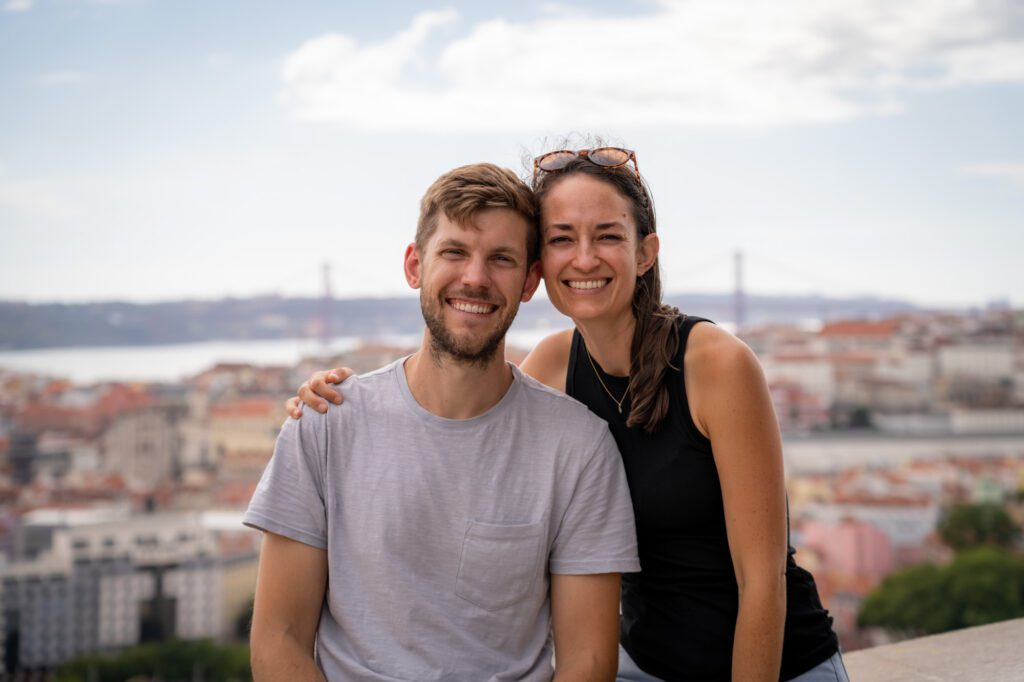

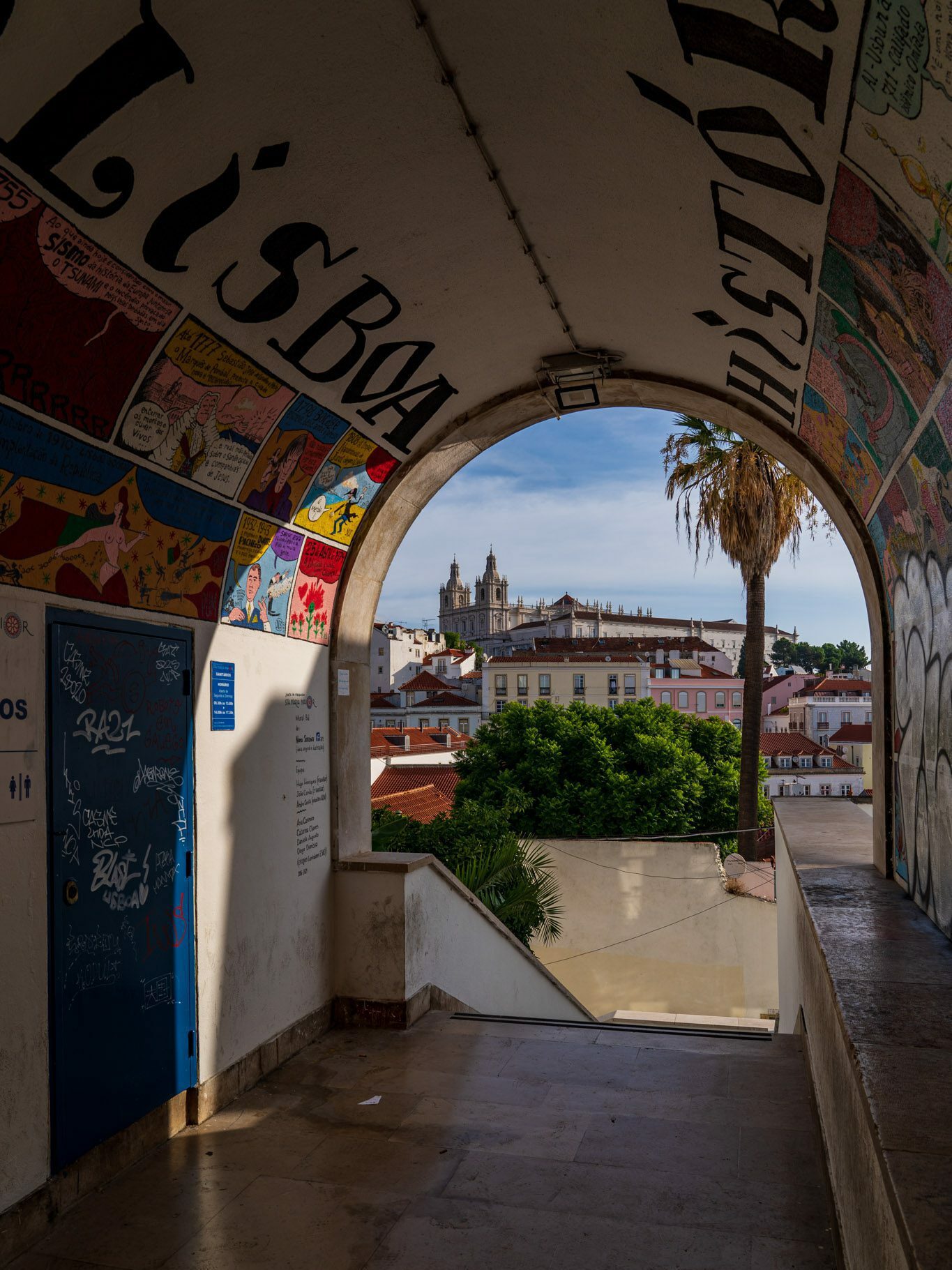
Disclaimer: Some of the links in this post, like hotel links, are affiliate links, meaning at no additional cost to you, we make a little bit of money if you click through and book. That being said, we would never recommend something to you that we don’t stand behind 100%.
What Can You See with 7 Days?
The first thing we should do here is set expectations for what you’re going to find in this itinerary, because it is very much NOT a “one city per day to cram it all in” situation.
Generally speaking, we highly recommend spending no less than two or three days in a city at the very least.
Mostly because packing your bag and moving every day or two is exhausting, and is not a particularly pleasant way to travel (especially with check in and check out times, which can mean you’re losing precious time on your trip just waiting around).
There are four main areas of Portugal that we think you should focus your time on if it’s your first time; Lisbon, the stretch between Lisbon and Porto, Porto, and the Algarve.
Of course, there are a bunch of other places in Portugal that are worth visiting, but those are the parts of Portugal that we think make the most sense for first timers to focus on.
Unfortunately, we don’t really see a way to do all of them in just a week.
In fact, we have a hard time finding a way to do three of the four in a week.
Our strong recommendation here is to avoid the impulse to stretch your time in each place too thin, and instead split your time between Lisbon and Porto, which are both big cities with tons to do, see, eat, and drink, and also have multiple day trips available to get out of the city and see other parts of Portugal.
Definitely don’t miss a day out to the Douro Valley from Porto, which was absolutely the highlight of our three month European extravaganza a few years ago (we did this guided day trip that includes transportation, and have since sent multiple groups of friends and family on it because we loved it so much).
Unfortunately, that means both the Algarve and the stretch between Lisbon and Porto are in the “save for next time” category (though the latter is the first place we’d add time if you have an extra few days – more on that in the “more time” section below the main itinerary).
If the Algarve and its beaches are a must-see for you, we’d do one of two things.
We’d either spend your entire trip in southern Portugal (there’s plenty to do to keep you occupied for a week), or replace Porto with the Algarve (we like the area between Lagos and Sagres on the western end) so that you’re doing Lisbon and the Algarve.
More on the Algarve – do you need a car, what to do and see, how much time do you need – in our guide to planning an Algarve itinerary.
Where to Start and End Your Trip
To be as efficient with your time as possible, we’d strongly recommend booking an open-jaw ticket – that means a flight that arrives in one city and departs from another – which will probably be slightly more expensive, but will save you almost an entire day of backtracking.
That ticket should arrive in Lisbon and depart from Porto (or vice versa – it’s easy to reverse this itinerary if the flights work out better that way).
In Lisbon, you want to fly into the biggest airport in the country, Humberto Delgado Airport (LIS).
Then you’d fly home from Porto from Porto’s main airport, Francisco Sá Carneiro Airport (OPO).
Keep in mind that if you book a roundtrip flight in and out of one of the cities, you’ve got a three hour train ride to get back for your flight (plus travel time to the airport).
Getting Around Portugal
Assuming you’re taking our advice and sticking to Lisbon and Porto, we have explicitly designed this itinerary so that you do not need a rental car to do it.
In fact, renting a car will be more of a hindrance than a help if you’re sticking to the cities because both parking and driving is kind of a nightmare.
Instead, take the train between the two main cities, which are convenient, efficient, and plentiful.
At a high level, there’s a robust train network run by Comboios de Portugal and bus network through companies like FlixBus and ALSA that connect most major cities and towns throughout the country.
We love traveling by train, and it’s the best way to get around on the west coast, between Lisbon and Porto (and even further north than Porto) where there are both regional and high speed trains to choose from.
Trains in Portugal are significantly cheaper than in places like Spain and Italy, which is an added bonus (they’re also slightly less comfortable, in our experience).
With limited time, always choose the high speed (Intercity, or IC) trains, which will be more expensive but significantly faster.
It gets a little more complicated when you start talking about either the Algarve or some smaller destinations between Lisbon and Porto. If you want to visit either the beaches on the Algarve or some of the smaller towns between the two big cities, renting a car is probably your best bet.
But we’d only rent the car for the specific days you need it, not for the whole trip.
7 Days in Portugal: A Perfect Itinerary for First Timers
And now, let’s get into the itinerary.
Here’s what the itinerary you’re going to find below looks like written out.
- Day 1: Lisbon
- Day 2: Lisbon
- Day 3: Lisbon
- Day 4: Day Trip to Sintra (Stay in Lisbon)
- Day 5: Porto
- Day 6: Porto
- Day 7: Day Trip to Douro Valley (Stay in Porto)
Obviously, you’ll have to massage this itinerary a little bit to make it work with your specific flights.
We’re assuming you have seven full days in Portugal, not including the half days that would be dedicated to your arriving and departing flights.
Obviously, there is a LOT to see in Portugal, and we have plenty of ideas on how to make changes to this itinerary.
Days 1-3: Lisbon
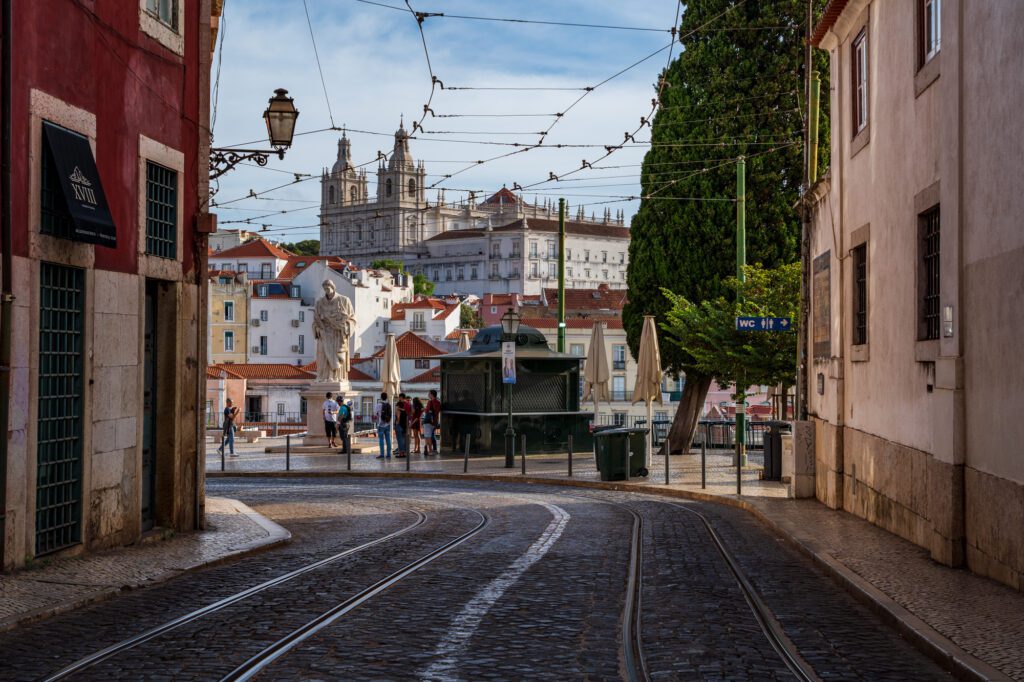
Lisbon is the obvious place to start any foray into Portugal because it is both the biggest city in the country (it’s nearly twice as big as Porto by population, though it gets tricky with the metro areas) and also the Portuguese capital.
Lisbon reminds us a lot of a city that’s near and dear to our hearts, San Francisco, which is where we met and eventually got married before hitting the road full time in February of 2020 (OOPS).
The main reason that Lisbon and San Francisco feel similar to us is the hills, but there’s also the old school cable cars (which inspired some of the lines in San Francisco) and the big red bridge that only add to the similarities in our minds.
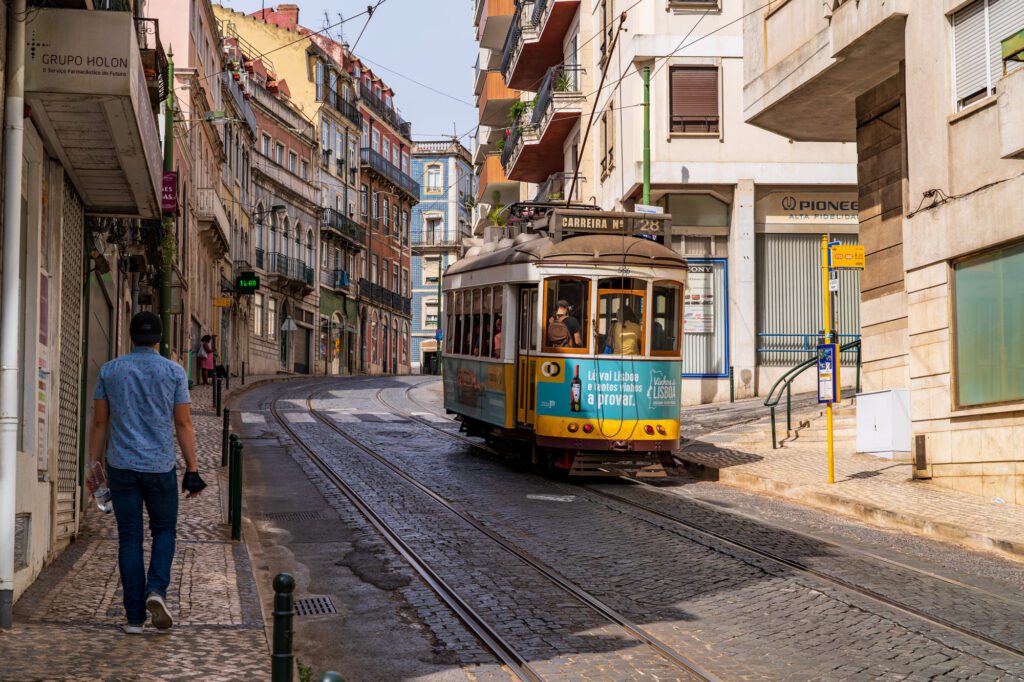
On our first foray into Lisbon a few years back, we spent four days in the city on the front end and then ended our trip with another four days in the Portuguese capital on the back end.
Another reason we like Lisbon is the fact that there really isn’t a major tourist attraction that draws thousands of tourists a day, like the Louvre, Vatican, or even the Alhambra in southern Spain.
There’s plenty to do and see in Lisbon, but there isn’t really a single attraction that is going to require a bunch of advance planning and logistics (which is similar to our adopted home, Portland).
Instead of spending your time inside museums and churches, Lisbon is best explored on foot, soaking up the Portuguese sun and walking between stops. Take in the views, stop for a pastel de nata (or seven), and pick up a tin of fish and a bottle of Portuguese wine to enjoy later.
In this itinerary, our recommendation is to spend four days in Lisbon, with one of those days used for a day trip out to the town of Sintra (more on what to do and see there below).
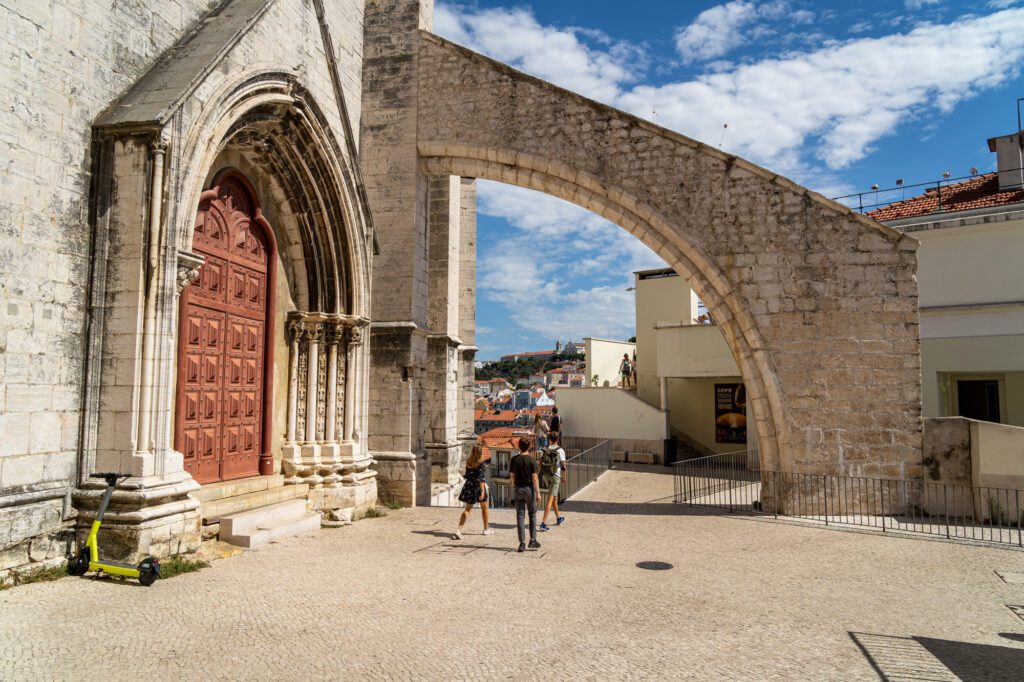
Things to Do in Lisbon
Lisbon is a big city, so there’s plenty to do and see to fill more time than you’ve actually got on this itinerary.
With three days in the city itself (the other day being spent in Sintra) you’re going to have to prioritize, and here are our recommendations for what to do with your time.
There are plenty of other things to do and see in Lisbon. For more, read our 3 day Lisbon itinerary, and our guide to the best things to do in Lisbon.
Catch the Views from all the Miradouros
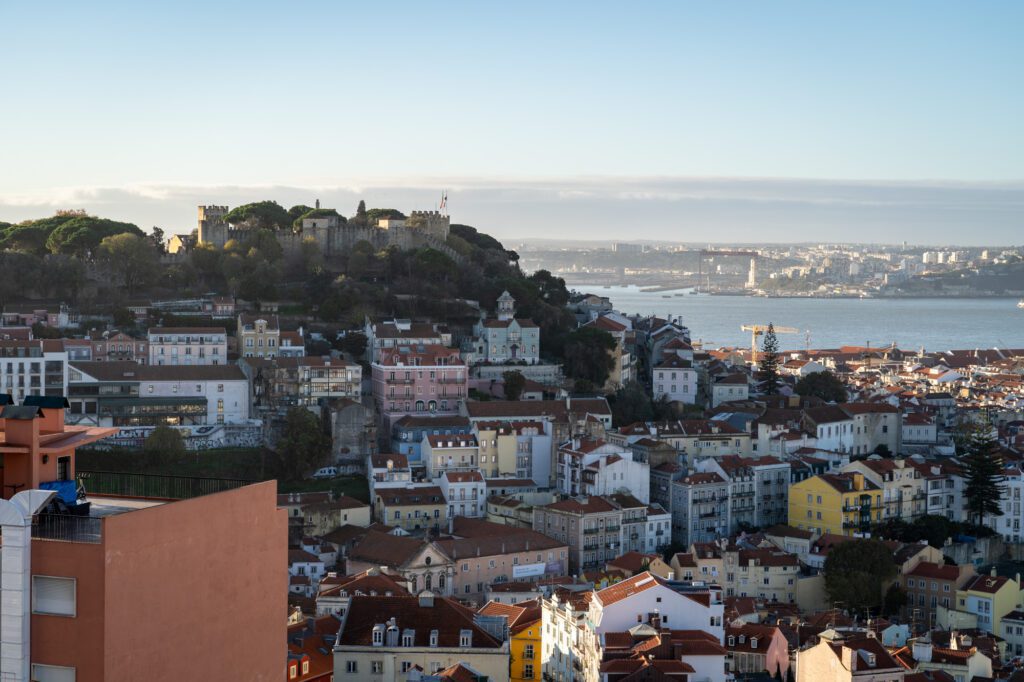
One of the big benefits that comes with a city of hills is the views from the top of them! Sure, it’s usually going to take some effort – there were multiple points where we were sweating profusely in search of a great view – but once you’re at the top, the reward is worth the effort.
There are three viewpoints in Lisbon that stand out to us as worth prioritizing.
First is our favorite view of the city – Miradouro da Senhora do Monte (which you can find here on Google Maps), pictured above.
This view includes the Castelo and hill that Alfama sits on along with the river in the distance and the oval shaped Praça Martim Moniz in the foreground.
It’s a bit of a trek to get up there – and the public transit options are somewhat limited – but it’s well worth it.
There are a couple of things worth checking out nearby that involve beverages, namely the craft brewery a few blocks below (8a Graça – here on Google Maps) and Lapso Specialty Coffee Bar (here on Google Maps).
It’s also worth stopping by Miradouro da Graça (here on Google Maps) on the way up or down, though the view isn’t quite as nice as the one from further up the hill.
The second viewpoint is actually a couple of views within a couple of blocks in Alfama.
The two viewpoints are Miradouro de Santa Luzia (here on Google Maps), which looks southeast out over the river and the sprawl of Alfama down the hill, and Miradouro das Portas do Sol (here on Google Maps).
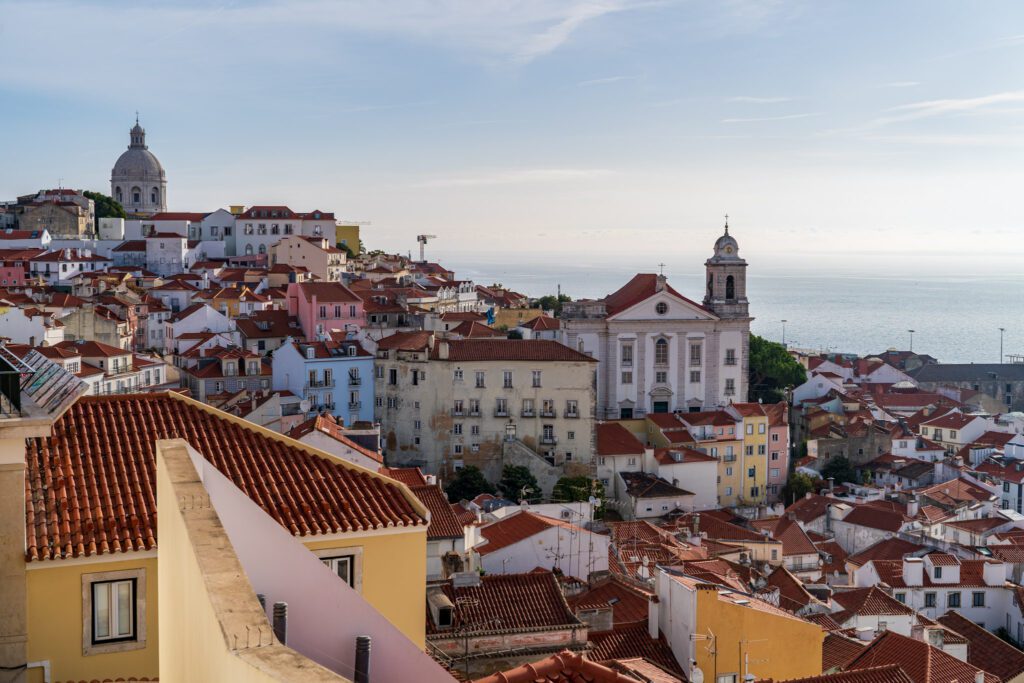
Again, there are a couple of spots worth stopping by right near these views.
We love Miss Can for their sustainable tinned fish (and we bring back a bunch whenever we’re in Lisbon), and they have a restaurant right up the hill from Miradouro de Santa Luzia.
There’s also a great work of street art that depicts the history of Lisbon in a passageway under a set of stairs here on Google Maps that’s worth a quick stop (you can see a picture of it in the intro to this guide).
And while the quality of drinks isn’t going to be perfect, we also think a stop at Quiosque das Portas do Sol (here on Google Maps) for a drink or coffee is worth the price for the view you get from the terrace.
The last viewpoint we like is from across the valley from the other two at Miradouro de São Pedro de Alcântara (here on Google Maps).
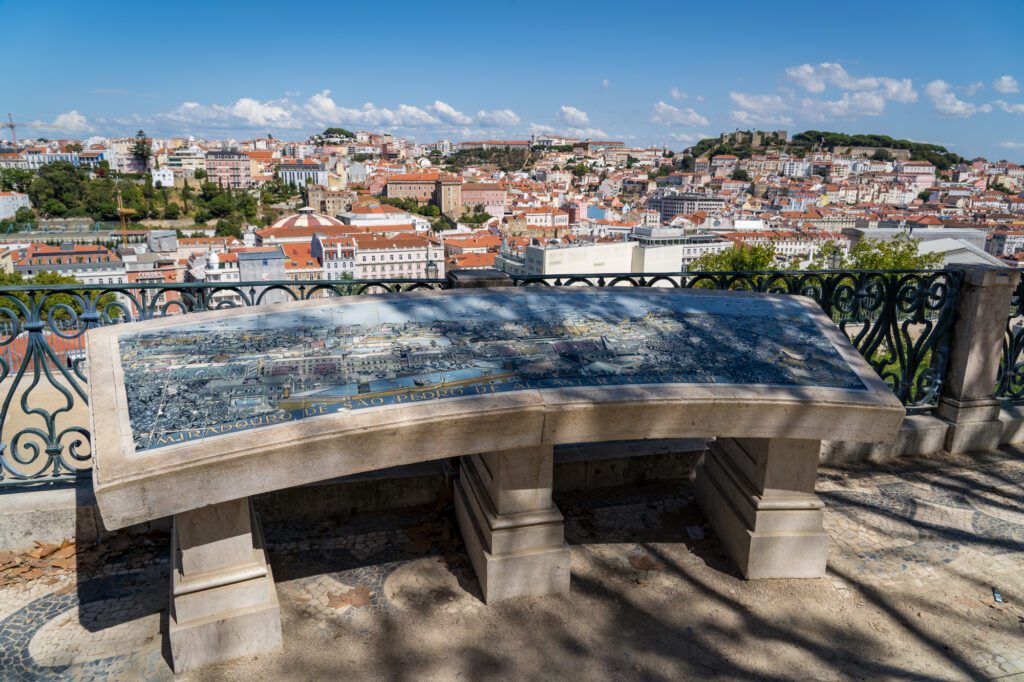
You’ll find a great view that is more accessible from central Lisbon and also has a nice little guide to the various hills and landmarks you can see.
Devour Pastéis de Nata by the Dozen
I’m almost certain that one of the first things you know about Portugal is that it’s the birthplace of the pastel de nata, a delicious little egg custard tart that has become extremely popular even outside of Portugal over the past few years.
The legend goes that the pastel de nata was created by monks from a monastery in Belém wayyyy back in the early 19th Century.
And the story is actually fascinating, and completely plausible.
Next to the monastery, there was a sugarcane factory, and after the revolution in Portugal in 1820, all convents and monasteries were shuttered in 1834, which meant that the monks had nowhere to go, and no way to make a living.
Before that, they bought A TON of eggs (the whites were used for starching robes) and found themselves with some leftover egg yolks, so they started making sweet treats as a little bit of a side hustle (and probably, more importantly, to enjoy themselves).
Ever the entrepreneurs, they sold that recipe to the pastry shop – the same one that exists there today – using that handy dandy sugarcane factory and those eggs.
Guess what the two main ingredients are in those pastries? Sugar and eggs.
They started pumping out these “Pastéis de Belém” – which would eventually become known more broadly as “Pastéis de Nata” – and two centuries later, the recipe and methods are said to be almost exactly the same as they were back in the 19th Century.
There are a nearly unlimited number of places to get a pastel de nata in Lisbon. As you might already know (or have guessed based on our name), Matt has Celiac Disease and can’t eat gluten, so his selection was very limited.
However, on that first trip to Lisbon, we were traveling with Matt’s two brothers, and between them and Alysha, we tried a fair amount of pastéis.
And Lisbon is home to some of the best pastelarias (pastry shops) and tastiest pastéis (plural of pastel de nata) in the entire country.
We got three recommendations from locals when we asked about their favorite place to get pastéis de nata in Lisbon. These were:
- Manteigaria. Popular bakery specializing in pastéis de nata, with two outlets in Chiado and Ribeira.
- Pastéis de Belém. The historic bakery in Belém is close to the Jerónimos Monastery where the sweet pastry was invented. This bakery serves the “original recipe” of pastéis de nata (allegedly).
- Pastelaria Aloma. Award-winning pastéis de nata bakery that dates back to 1943, now with multiple locations around Lisbon.
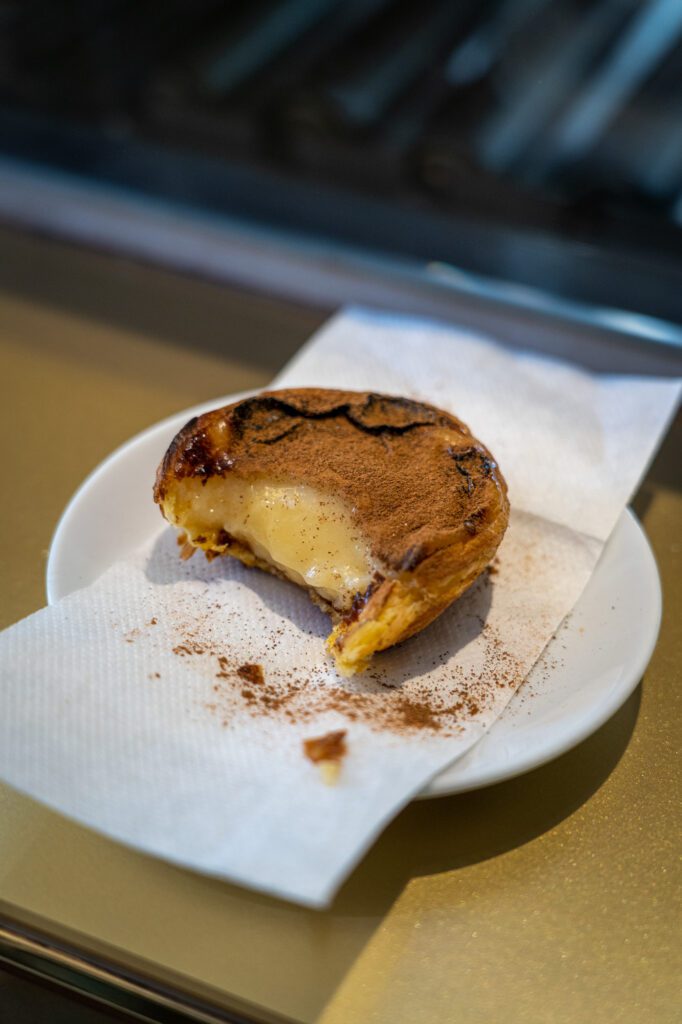

We tried all three to see which version we liked best and Manteigaria was the CLEAR winner.
However, we also found that they were all relatively close and that the more important factor than the specific bakery was whether or not the pastel was fresh and warm, which led to a much better, flakier experience with a nice texture contrast that just wasn’t the same when they were cold.
The point is that you should absolutely source recommendations from people you meet in Lisbon, and try them all for yourself to see which proprietor comes out on top for you.
Dive Deeper into Lisbon’s Food Culture
Experiencing the food culture in places we’re visiting is one of our favorite aspects of traveling, and we try to include a food tour, cooking class, or market tour in most places we visit.
Unfortunately, the reality is that because Matt has Celiac Disease and can’t have even a speck of gluten without being sick for days, a food tour or cooking class wasn’t in the cards for us in Lisbon.
HOWEVER. That does NOT mean it shouldn’t be for you!
We’d highly recommend it because it gives you a local’s perspective on the city’s food scene – what and where to eat and drink – and you get to connect with fellow travelers and try some amazing food.
Here are some options for you, split between food tours and cooking classes. Our bias is to do a cooking class, because we LOVE to cook and it’s generally easier to make work for Matt, but we also enjoy a good food tour.
When my mom and a friend went to Portugal a few years after us, they did this food tour in Lisbon and loved it (it was one of the tours that convinced my mom that it is sometimes worth splurging on guided tours). It’s with Eating Europe, a company that operates tours across the continent.
Generally, we prefer finding local companies (versus bigger multinationals), and there are a couple of great options in Lisbon, like this food tour in Alfama or this food tour with 17 tastings, which would be our top two picks.
If you’d prefer a cooking class, we’d suggest either this class focused on pastéis de nata or this cooking class that focuses more on main Portuguese dishes.
Head out to Belém
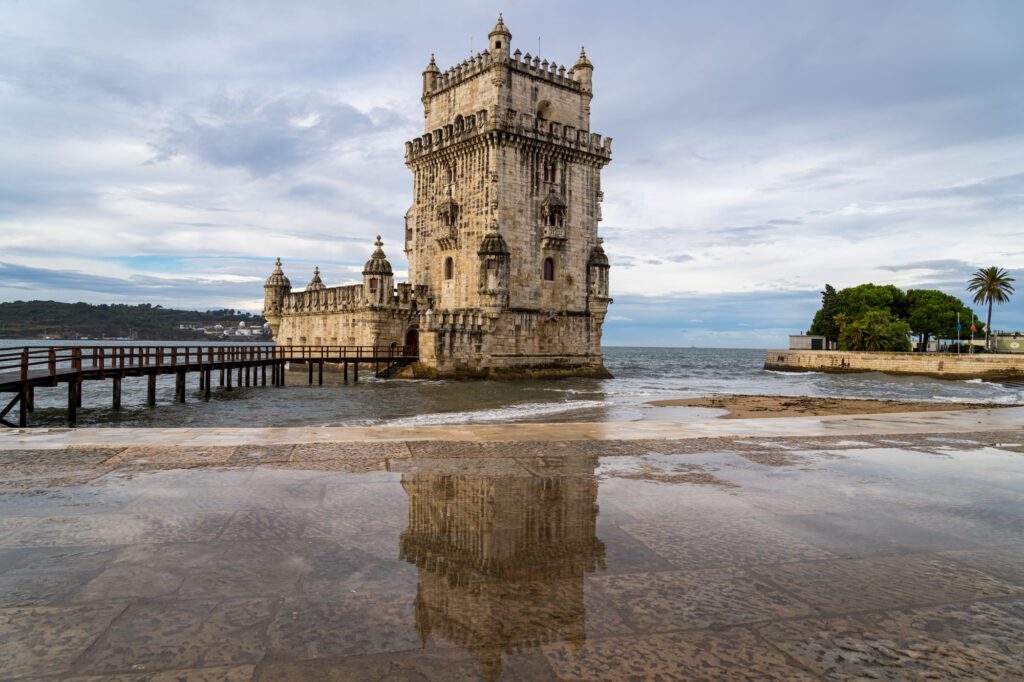
Belém used to be a separate city, but as Lisbon expanded it has swallowed it up and now it’s a district within the broader city of Lisbon.
It’s right along the river, and is home to several cool sights, including the Torre de Belém, a huge (beautiful) monastery, and, perhaps the most important, Pastéis de Belém, which is said to be the birthplace of the original pastel de nata.
Today, the entirety of Belém is a UNESCO World Heritage Site.
Here are a few places in the area that are worth your time.
- Igreja de Santa Maria de Belém: There are two pieces here – the church, and the Mosteiro dos Jerónimos next door is also worth a visit (mostly for the incredible cloister and other architectural details).
- Pastéis de Belém: As we mentioned above, this is where the monks got their big idea to take the over-abundance of eggs and sugar and convert it into cash (through their pastel de nata recipe). It’s a must-stop if you’re looking to compare the various proprietors around Lisbon since it is (allegedly) the original.
- Padrão dos Descobrimentos: A riverside monument that celebrates Portugal’s maritime heritage with some of the most famous explorers in world history depicted here. No need to go inside.
- Torre de Belém: The crown jewel of Belém, this tower has served many purposes over the years, from prison to guard tower. Don’t go up into the tower. We just saved you 6 Euros a person. Lines are long, and the view from the top isn’t really worth the money or the time it’ll take you to get there. It is, however, worth admiring from the outside.
On your way to or from Belém from the city center, it’s worth stopping at LX Factory, a converted industrial area that has been taken over by a nice variety of restaurants and hip shops.
Is it “authentic”? Not necessarily. Is it a nice place to spend an hour checking out the shops and grabbing a drink or a coffee? We think so.
Where to Stay in Lisbon
Lisbon is a big city, but the slice of the city where you’ll be spending most of your time is actually relatively small.
The biggest question probably relates to the aforementioned hills, which can provide some challenges for people with mobility restrictions.
If that’s you, we’d probably stay in Baixa, the flatter, more modern section of the city along the river.
Here’s a quick summary if you’re short on time.
- Our overall recommendation is to stay in Chiado, which is a great combination of central location, charm, and places to eat and drink. We loved this part of the city, and it’s basically the centerpoint between all of our favorite neighborhoods in Lisbon. Our friends stayed at the beautiful Casa do Barao, a gorgeous hotel in a perfect location (with a rooftop pool!). If you’re looking for a more affordable stay, look at Feeling Chiado 15 or Chiado 44, two charming, mid-range guesthouses in the heart of Chiado.
- If you’re looking for a more affordable option, stay at the base of Lisbon’s many hills in modern Baixa (near Rossio Square). It lacks the charm of the rest of the city (it’s very modern and well-planned, which isn’t the case for the hills), but the location is great for getting around (on foot or on public transit), and the prices are reasonable. Our top hotel pick here is My Story Hotel Figueira, which is right on a beautiful square a few blocks from Rossio station (where you’ll catch the train for a day trip to Sintra). We stayed at Porto do Mar Apartments in Baixa a few years ago, which we recommend (for the price and location), but we are staying at the Visionaire Apartments (which are around the corner from the hotel we mentioned above) for our next trip this spring.
- If you want to stay in the most romantic part of the city, you should stay in Alfama. This part of the city is all narrow streets and excellent views out over the city. Plus, a few of our favorite spots to eat and drink are in the neighborhood (don’t miss Miss Can!). It’s a pain to get to, though, since it’s on top of a big hill with limited transit options. The hotel options here are limited, and we’d opt for the Convento do Salvador for a unique stay in a former convent.
We have an entire guide dedicated to finding the perfect place to stay in Lisbon. Read that for far more detail than we’re including in this section.
Day 4: Day Trip to Sintra (Stay in Lisbon)
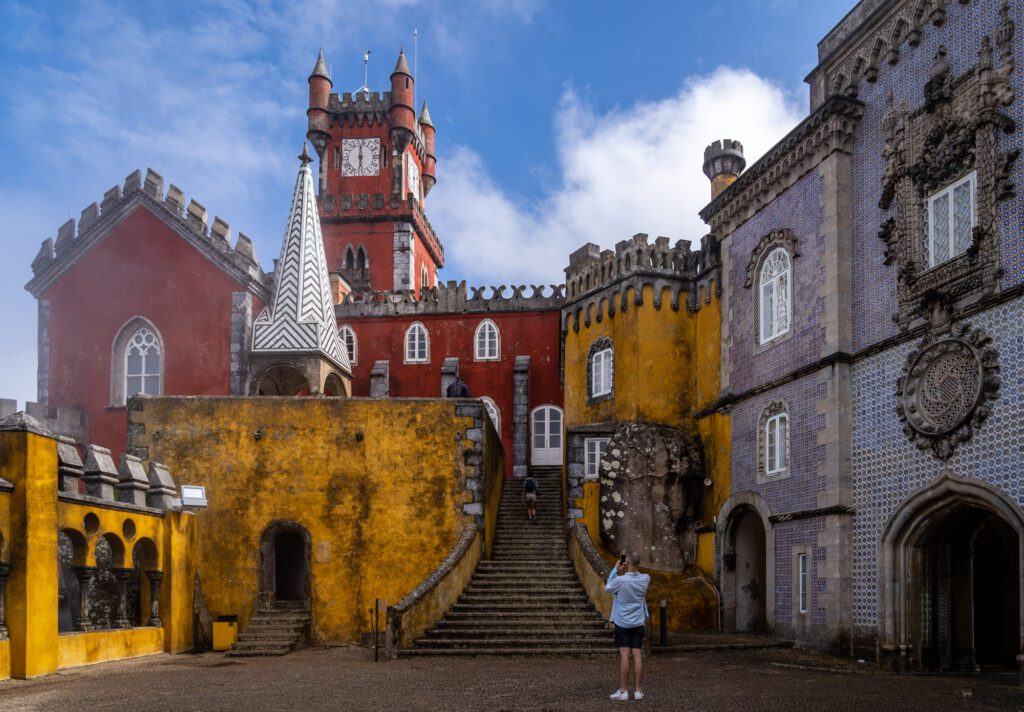
Sintra is the most popular day trip from Lisbon, and for good reason (we think).
It’s easily accessible by train from the city, it offers something a little different from Lisbon, and it has enough to do to fill anywhere between a half day and a full day, depending on what you’re looking for.
Sintra is a quick and easy 45 minute train ride northwest of Lisbon, and refers to a relatively large area that includes both a city and the hill that looms above it.
On top of that hill was, originally, a religious site that was meant as a quiet place to get away from the hustle and bustle of Lisbon and contemplate life. But then, after the earthquake in 1755, the monastery atop the hill suffered significant damage, and that era ended.
That’s when the king consort came in and snatched up the land and decided to build Pena Palace, which was essentially built as a summer home for him and his friends and family (the unique microclimate of Sintra, where it’s foggy and cool in the morning, means it’s much more pleasant than Lisbon in the summer).
However, it’s worth noting that Pena Palace is NOT the only sight worth seeing in Sintra, and we actually wouldn’t even recommend going inside the palace (spend your time on the wonderful gardens and grounds instead).
We’d do the grounds of Pena Palace, the Castelo do Mouros (which has magnificent views out towards the coast), and maybe Quinta da Regaleira (depending on how much appetite you have for different sights).
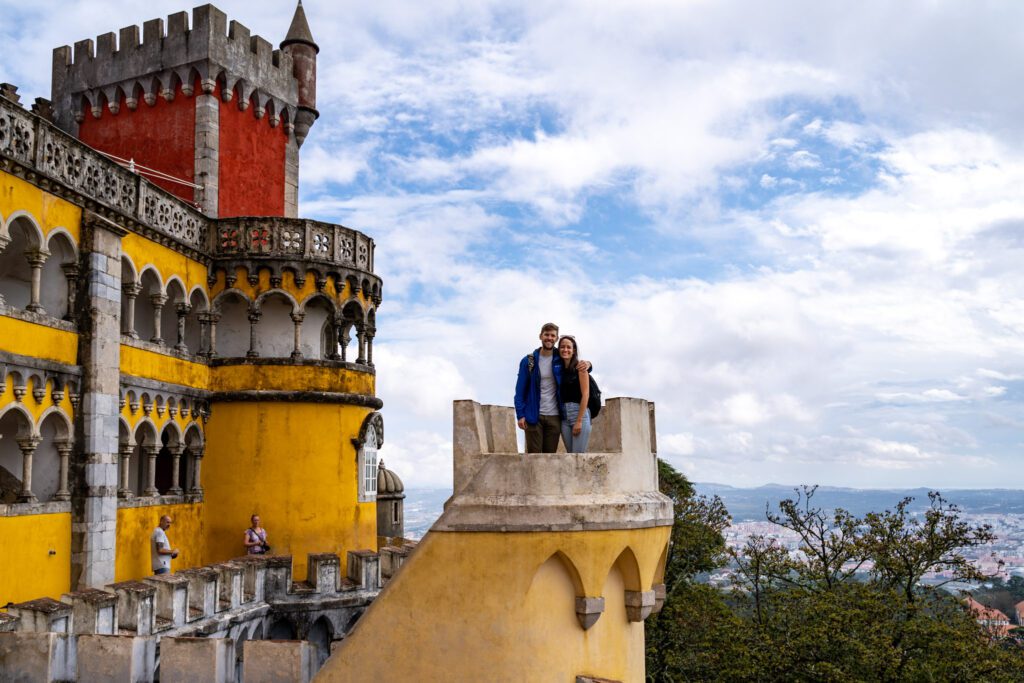
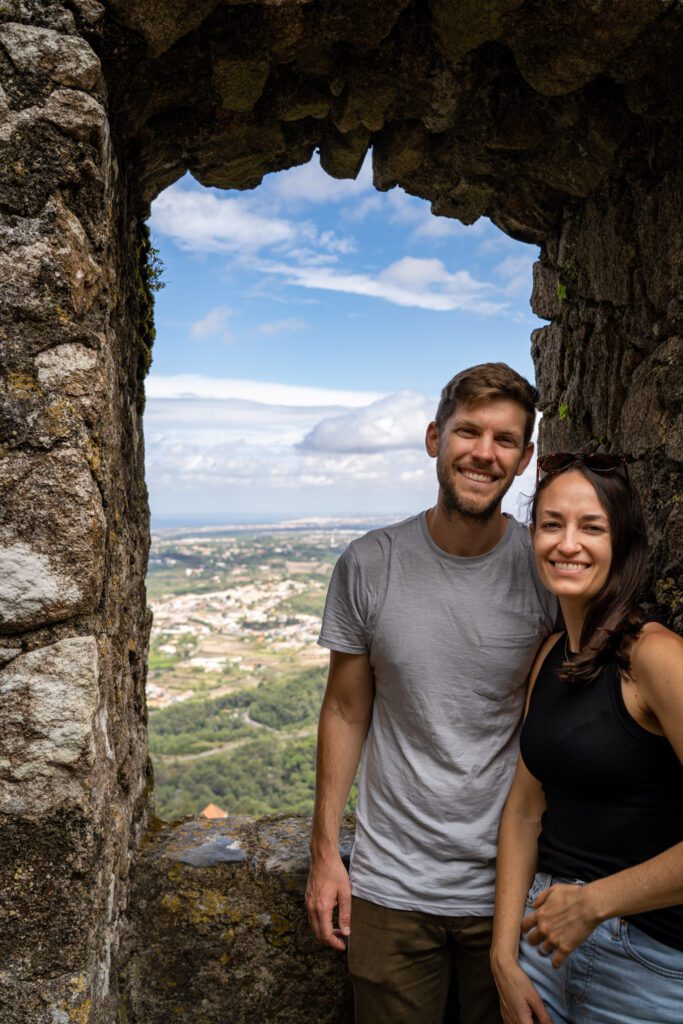
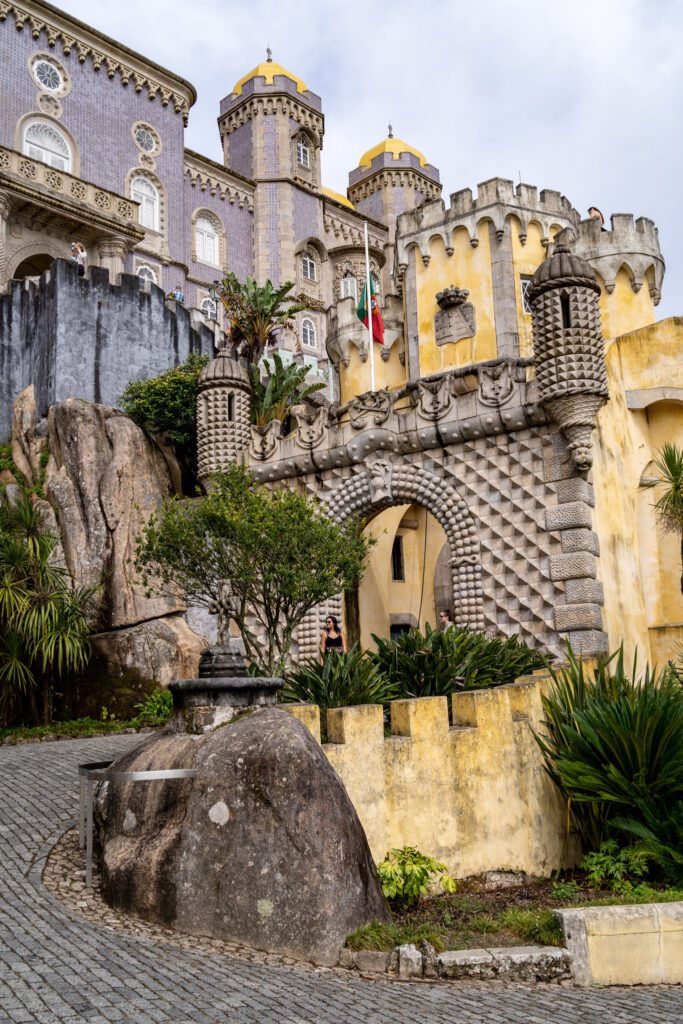
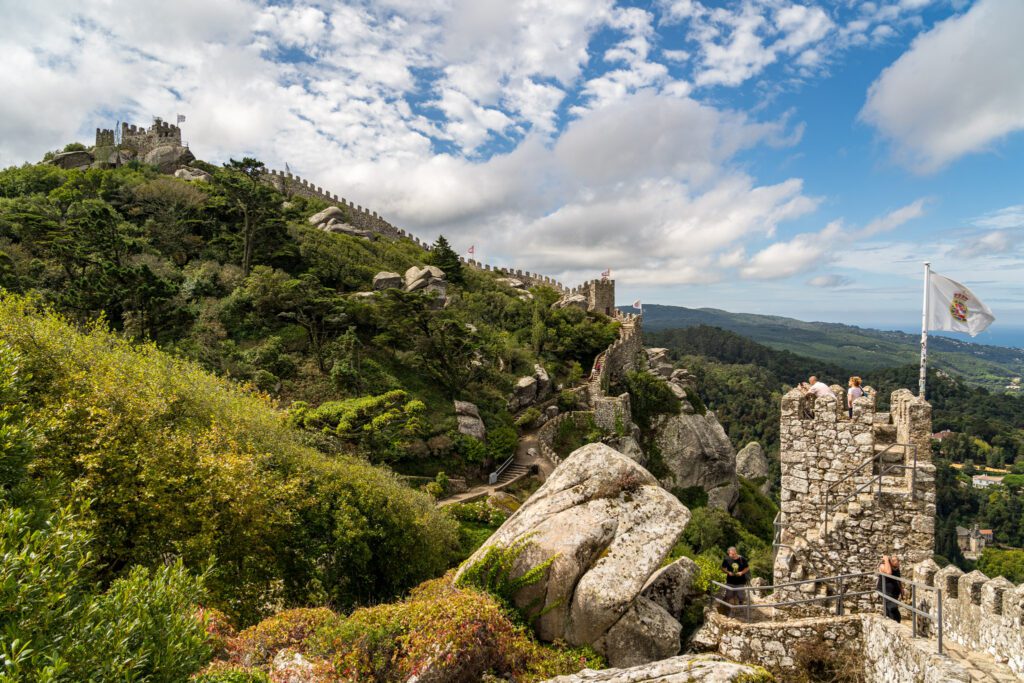
If you do want to do the third site, we’d do the first two in the morning, then have lunch and try Travesseiro, the famous pillow pastry (at the famous Piriquita in town) before heading out to Quinta da Regaleira.
One of our biggest pieces of advice for Sintra is to start your day early, and start from the top of the hill at Pena Palace and work your way down.
Take a bus, tuk tuk, or taxi from the train station to the top of the hill, and you’ll have an easy walk down the hill back to town to finish your day and catch the train home.
Rather than cover all of that information here in this already long guide, we’re going to direct you to our guide to planning a day trip to Sintra, which has everything you need to know – including logistics, what to see, and how to plan your itinerary.
Days 5-6: Porto
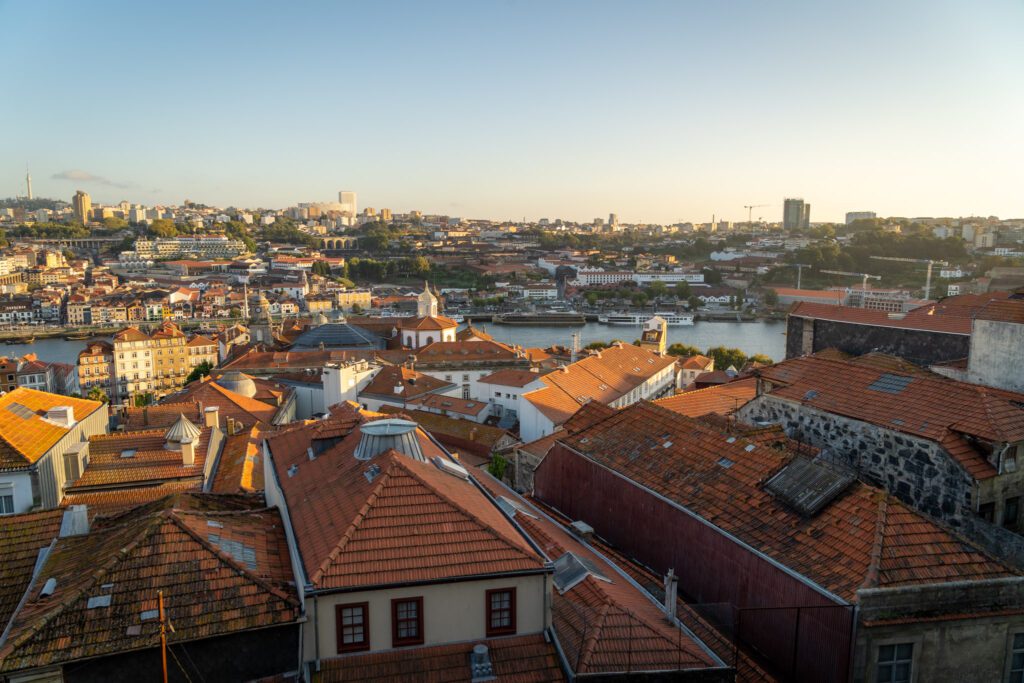
Porto is Portugal’s second biggest city and it has a bit of a friendly (ish) rivalry with Lisbon (the current capital) driven by the fact that Porto was one of the most important cities in the original kingdom and gives part of its name to the country as we know it today.
At the time, the kingdom didn’t include Lisbon because it was part of the Caliphate in southern Spain and Portugal. Which seems to be at least part of the rivalry.
Porto is an interesting contrast from Lisbon because it feels significantly older than Lisbon (outside of Alfama, maybe), especially from an urban planning perspective. Lots of narrow cobblestone streets and steep stairways around central Porto.
Mostly because of the fire in Lisbon during the 18th Century that burnt wide swaths of the city to the ground and allowed for more modern urban planning to take root (particularly in Baixa, where it’s most noticeable we think).
However, while the city’s architecture and urban planning feels older than Lisbon, the city has a distinctly youthful feel to it, which we wouldn’t really say about Lisbon.
The other thing to remember about Porto is that it’s fairly far north as the Iberian Peninsula goes, so the climate is somewhat different from the cities down south. If you’re American, think about the difference between northern California, where it’s sunny and dry, and Seattle where it’s cooler and wetter.
It’s a more compact city than Lisbon, so we think two days is enough to get a sense for the city and its history and culture (though we’d add another day if you have it).
Porto is also well-located in northern Portugal to serve as a home base for multiple day trips – including the wine tour of the Douro Valley that was the highlight of our three month European extravaganza a few years ago – which is how you should spend your third day in Porto, we think.
Getting from Lisbon to Porto
As we mentioned above, taking a direct train is your best bet between Lisbon and Porto.
From Lisbon, it’s a three and a half hour train ride to Porto.
You’ll leave from Lisbon’s Santa Apolónia station, which is the one you want if you’re staying in Lisbon’s city center. Oriente is Lisbon’s other train station, but it’s further from just about everything and will require a metro connection.
You’ll want to arrive at Porto’s Campanha Station, which is a short metro or train ride out to the east of Porto’s city center (you can get there from São Bento, the train station in the middle of the city).
In terms of trains, you have a couple of options.
Express Trains – called Alfa Pendular or AP – take two hours and forty five minutes or so, and are the most expensive (and comfortable) option.
Intercity trains – called Intercidades or IC – are cheaper, less comfortable, and take a little longer at three and a half hours. For what it’s worth, we took multiple IC trains, and it was plenty comfortable and super affordable, especially when you buy tickets in advance.
There are also regional routes, which take around five hours. You don’t want that here!
When you book your trains, look for “AP” or “IC” in the train number, which indicate which version you’re getting.
Click here to see options for your journey from Lisbon to Porto on Omio
Things to Do in Porto
Here are some of our favorite things to do, see, eat, and drink in Porto (in no particular order).
At the top here, we wanted to talk about Livraria Lello, which is perhaps the most famous bookstore in Portugal.
We’re conflicted about this one, because we actually chose to skip it after seeing the massive line outside – which exists all day long, from opening to closing.
Livraria Lello is a beautiful bookstore that became famous when fans learned that J.K. Rowling wrote a portion of the Harry Potter books while working in Porto as an English teacher in the early 90’s, and that this bookstore might have served as inspiration (key word: might).
The interior, particularly the staircase, is beautiful, but we were a little shocked by the price and popularity (there was a long line to enter, which baffled us).
It’s at least 10 Euros to enter (there are different tiers where you get different things now), which you’ll get back if you decide to buy a book.
There are plenty of other things to do and see in Porto. For more, read our 3 day Porto itinerary and our guide to the best things to do in Porto.
Get an Introduction to Porto on a Walking Tour
Over the past several years, we’ve come to the realization that walking tours are often our favorite way to get oriented in a new city for a few reasons.
First, you get a crash course in history and culture, which is a valuable baseline that will make the rest of your trip more enjoyable.
Second, you get to spend a few hours with a local who will give you all sorts of tips about what to eat, drink (and see), and specifically where to find the best version of said things.
Last but not least, you’ll discover new and interesting places that you definitely would never have found on your own.
We almost always start our trip with a walking tour for these reasons (and the fact that it’s helpful to get outside and move to combat jet lag).
All this is to say that if you want to get below the surface of the historic center of Porto, which is “the room where it happened” as Hamilton would say, you should absolutely do a guided walking tour.
In Porto, we have a couple of recommendations for you – one tour that we’ve done ourselves, one tour that Matt has booked for his upcoming solo trip to Portugal this spring.
The first is the tour we did on our first visit to Porto, which is this private tour that takes you on a journey through the city’s history and culture over the course of a few hours.
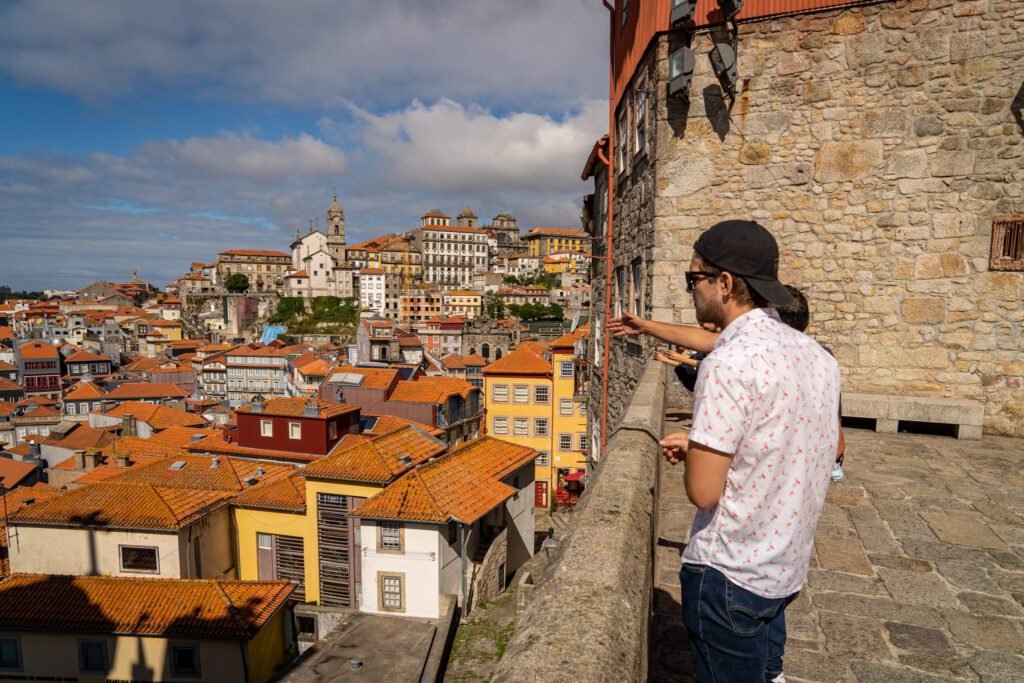
We had a group of three, and the private tour worked out in terms of price (and we were excited about the guide – which is the benefit of Withlocals where you choose the guide you want).
The second is this small group walking tour, which is focused on Porto’s history and immediately jumped out to me (Matt) as something I needed to do on my next trip (which is why it was the first thing I booked for my recent trip to Porto).
See the City from Above
Similar to Lisbon, the fact that Porto and Gaia – the city on the other side of the river where you’ll find all the port houses – sit on top of hills overlooking the river means that there are some excellent views to be had.
There are two that we think you absolutely shouldn’t miss, one on each side of the river.
The first is from Miradouro da Vitória (here on Google Maps), which is on the Porto side of the river just above Ribeira.
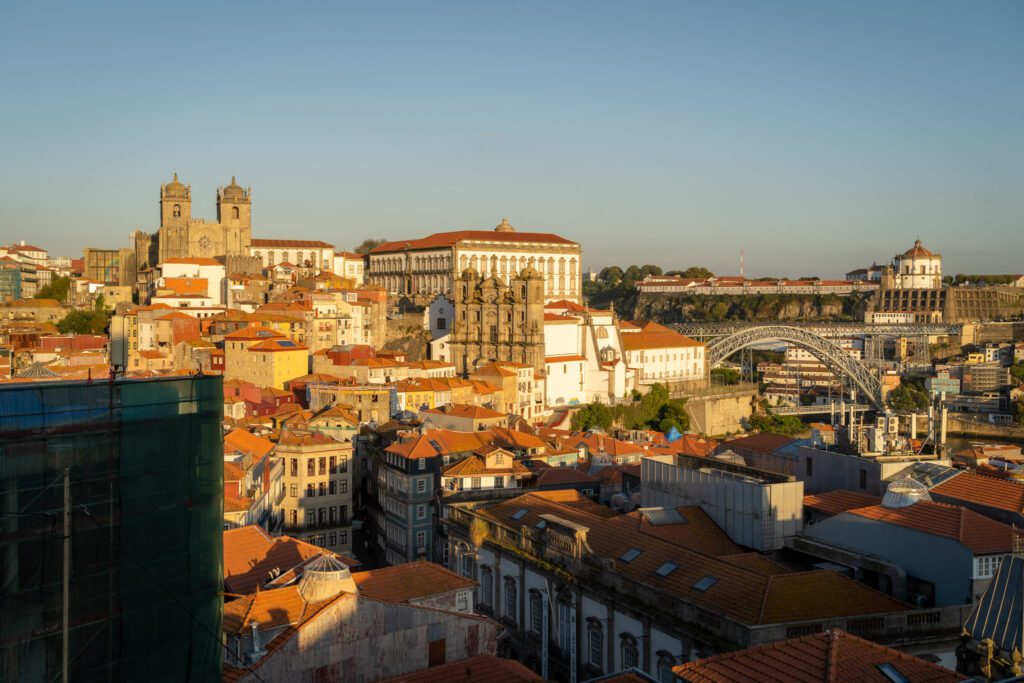
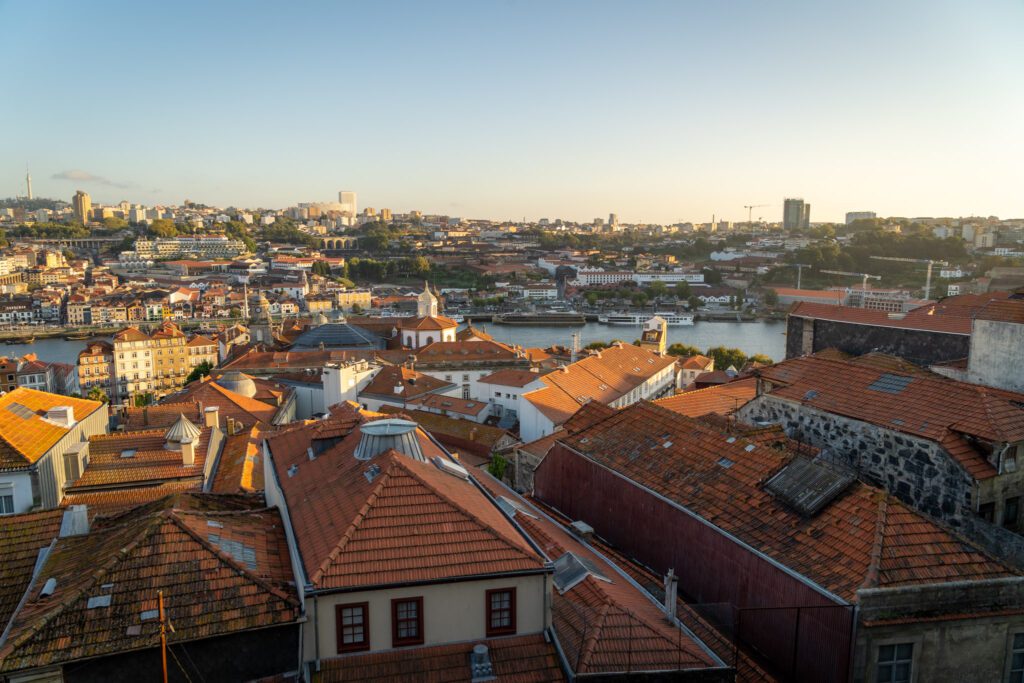
From here, you’ll be treated to amazing panoramic views over many of the city’s major landmarks, including the Cathedral, Bishops Palace, Douro River, and Ponte Luís I (the bridge). It does get pretty busy around sunset, so you will have to share the viewpoint with others (not in the early morning, though!).
The second view you shouldn’t miss is twofold; the view from Ponte Luís I (walk on the side of the bridge closest to the city center – the west side – for the best views) and the view from Miradouro da Serra do Pilar (here on Google Maps).
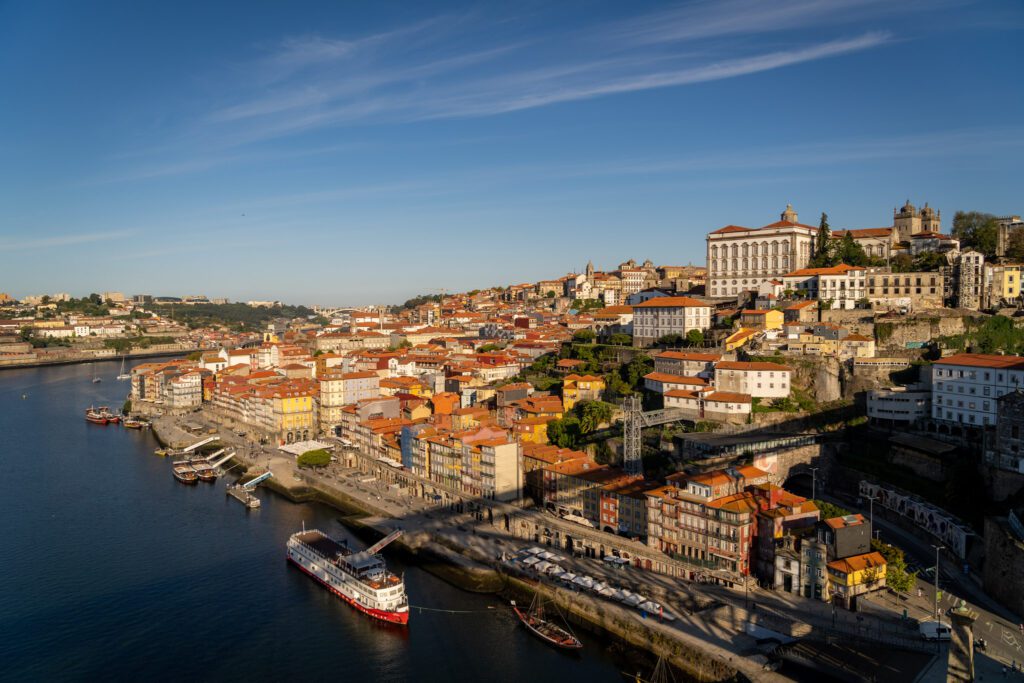
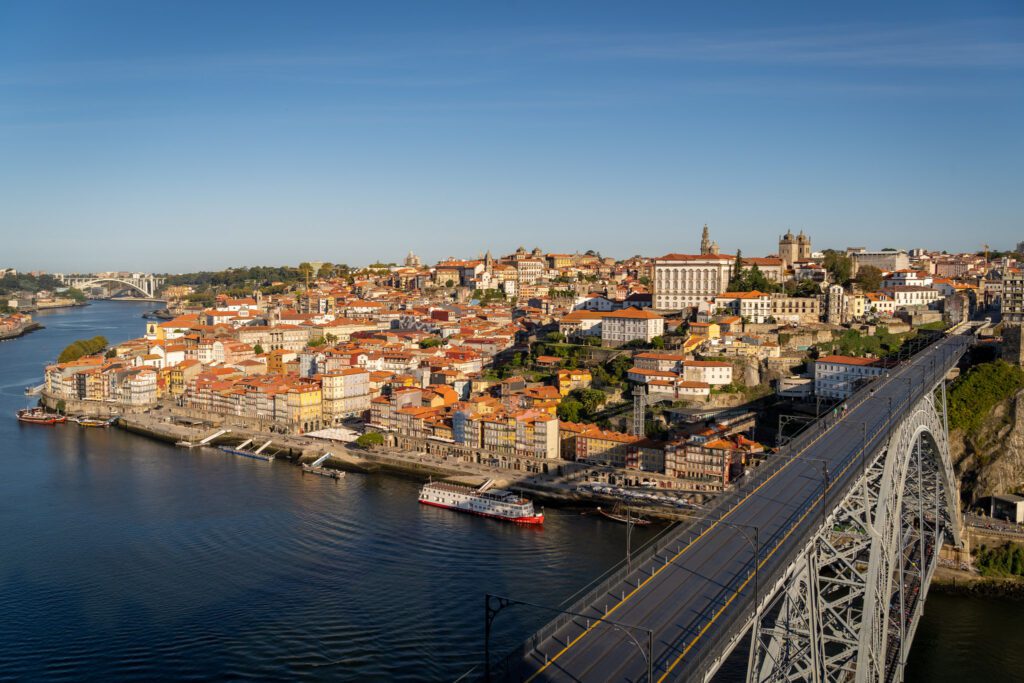
This view from the other side of the river gives you a great view of Porto’s sprawl up the northern bank of the Douro, and some nice views of the bridge itself from the latter viewpoint.
Explore Porto’s Gorgeous Azulejos
Azulejos are the white and blue tiles that you’ll find adorning all sorts of buildings around Porto (mostly churches, really), and they’re one of the country’s more famous exports and probably one of the things you know about Portugal.
There are several places to check them out while you’re in the city (including the train station), but a few stand out to us.
- Capela das Almas: This small chapel is famous for its striking blue and white tiles painted with scenes from the lives of saints. The church has become one of Porto’s most photographed landmarks. You’ll find it here in Bolhão.
- Igreja de Santo Ildefonso: A baroque 18th-Century church at the top of a hill in Old Town with azulejo blue and white painted ceramic tiles. Find it here close to São Bento Train Station.
- Igreja dos Carmelitas & Igreja do Carmo: These two connected 16th-17th Century churches feature orate granite facades with beautiful tiled walls. The lavish Baroque and Rococo style interiors of Igreja do Carmo are worth visiting too. The two churches can be found here.
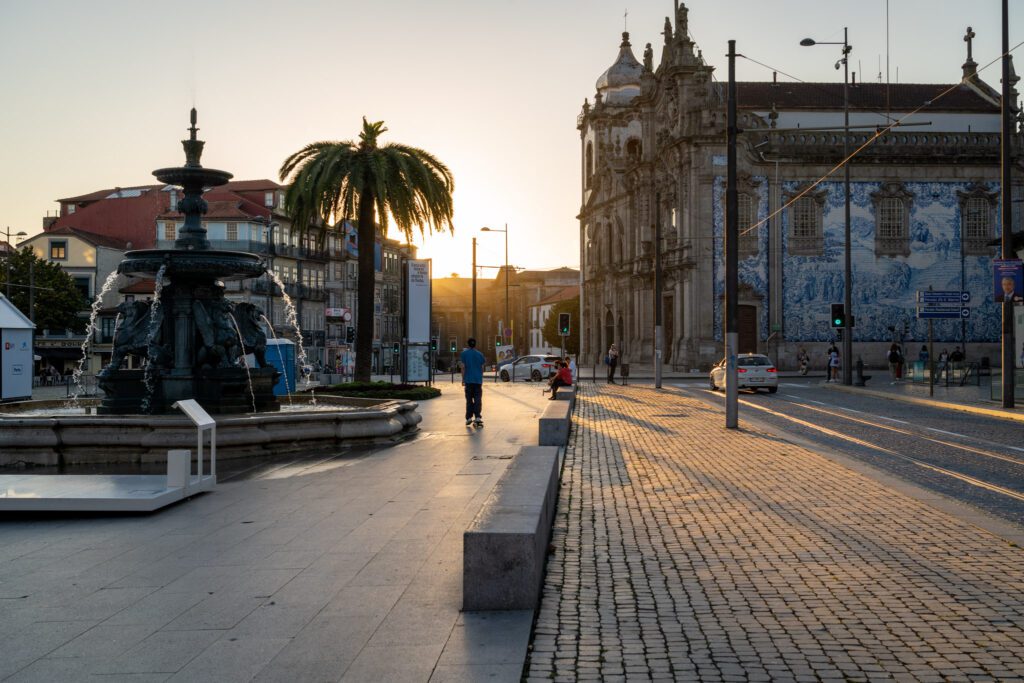
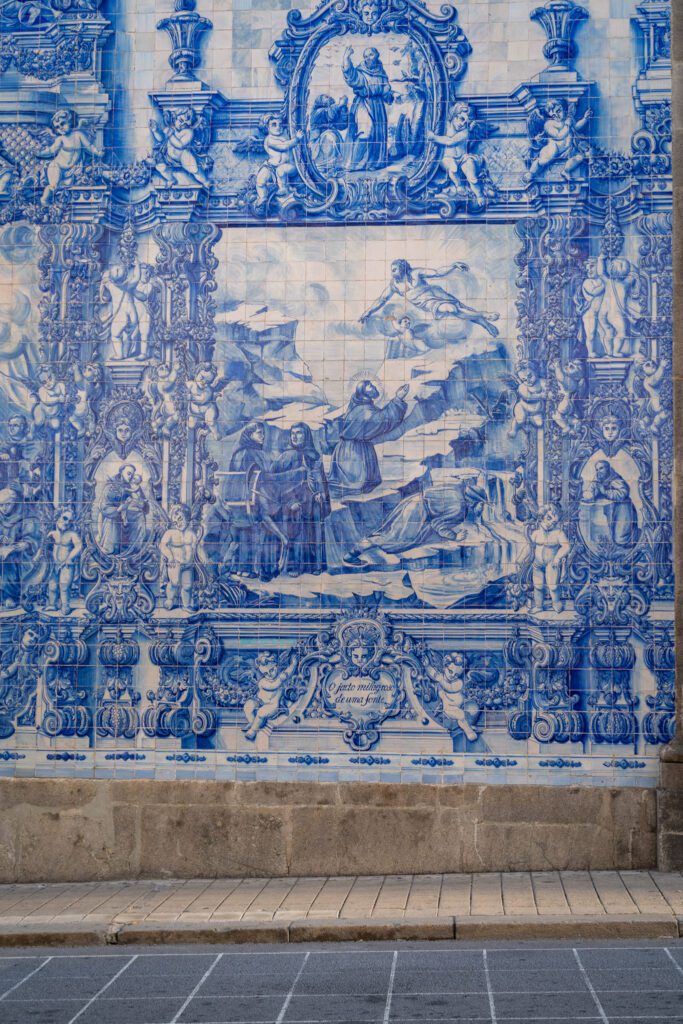
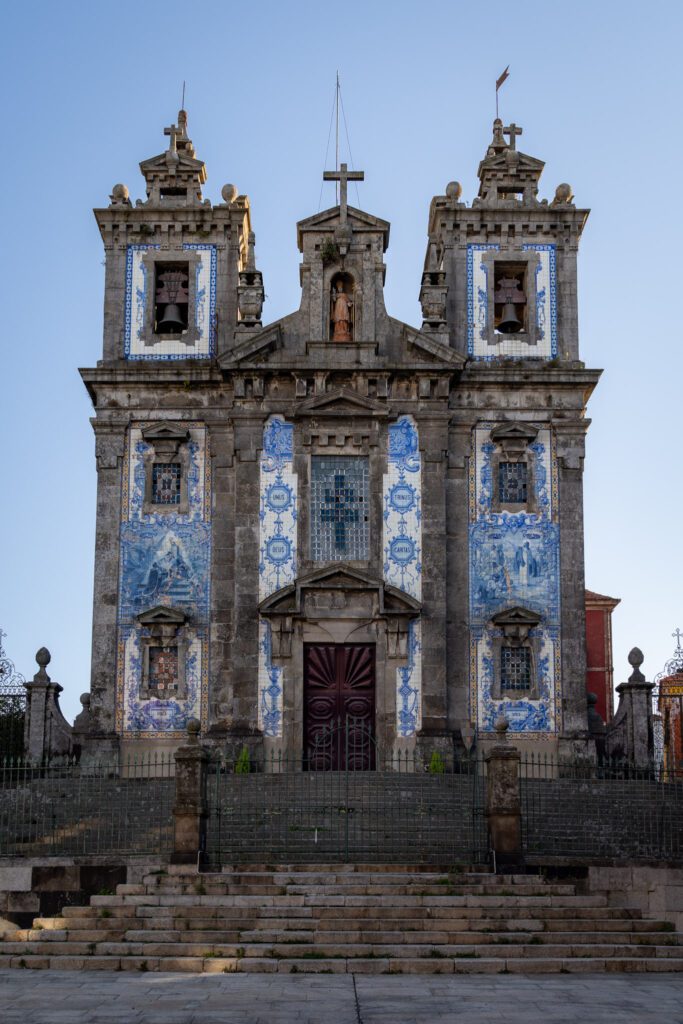
Feast on Porto’s Massive Sandwiches
Generally speaking, the best way to experience the food culture of a place is to have someone who knows what they’re talking about show you around.
However, Matt has Celiac Disease, and most food tours in Portugal weren’t particularly suitable for his gluten free needs. That doesn’t mean you shouldn’t do one, though!
My mom and her friend did this highly rated food tour in Porto with Eat Like a Local, and highly recommended it.
If you don’t want to do a full tour, there are two dishes you should definitely try in Porto.
The first is the bifana, a traditional sandwich consisting of a soft bread roll filled with thin slices of marinated pork and plenty of mustard and piri-piri sauce.
Try it at Conga, which was recommended to us by a walking tour guide (and my brother enjoyed it).
The other is the francesinha, which is an indulgent sandwich filled with various meats and smothered in a beer-based red-colored sauce.
Dive into the World of Port

Venture across the river over to Vila Nova de Gaia, which sits on the southern bank of the Douro River, to pay a visit to one of its historic port cellars and dive deeper into the world of port, the sweet wine that the region is famous for.
We were originally very skeptical of port – sweet wines aren’t necessarily our thing – but after spending a few days sipping on port in its many forms (our favorite being the porto tonico), we grew to appreciate it and even brought some home to share with friends and family and do a mini tasting.
Many of the port lodges – most of which feature British names because the British are the ones who financed the industry in the beginning – offer tours and tastings for visitors.
Some lodges you can simply walk up to and join a tour, while others require a reservation in advance.
Graham’s is the port lodge we visited, and we enjoyed the tour and tasting.
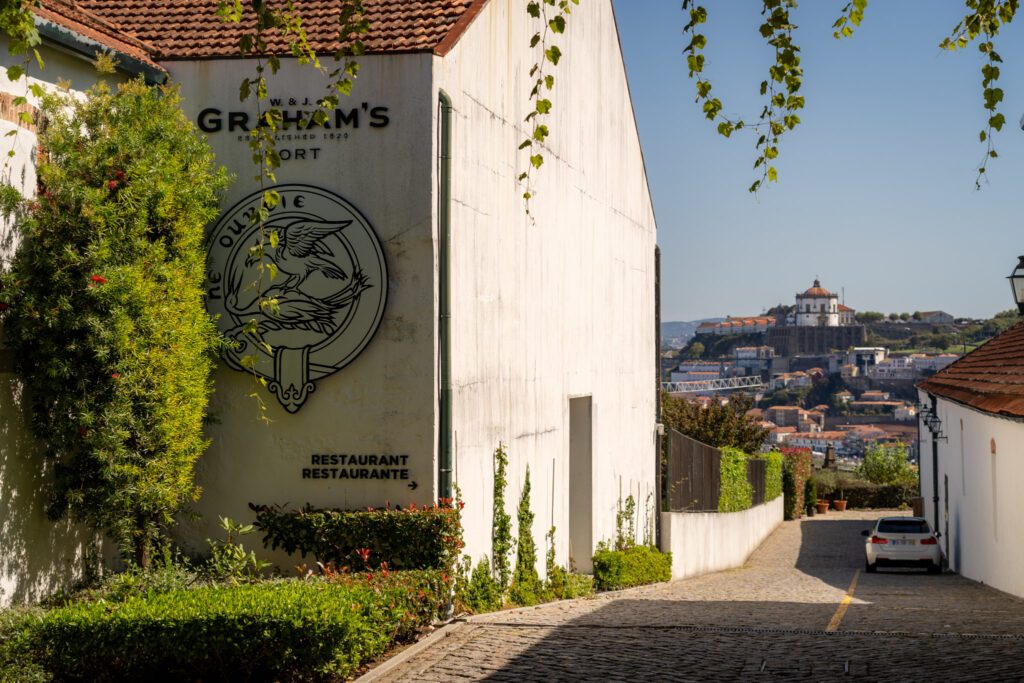
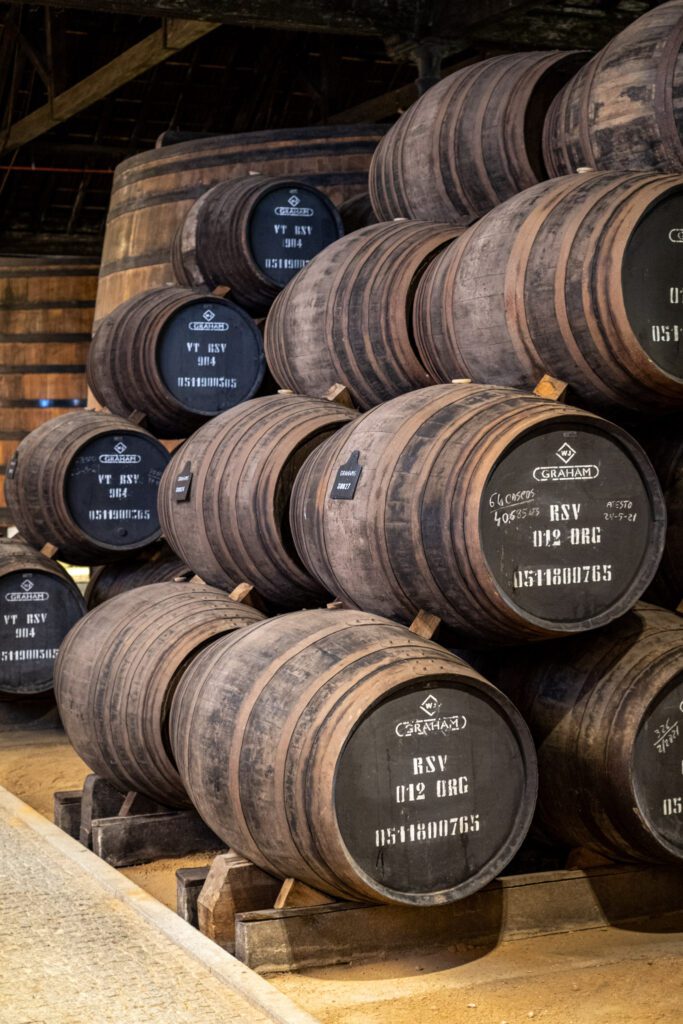

Graham’s dates back to the 1800s and is one of the most famous names in the industry.
When we came back from Portugal, we actually did a port tasting with friends at home in the US, and we were able to find Graham’s 10 Year Tawny at home (at Trader Joe’s, of all places).
The reason we chose Graham’s is the fact that the lodge is set a little back from the main tourist area, so it doesn’t get the big crowds the others do.
Plus, it’s up on a hill with great views (though to our disappointment, the tastings are done inside, and the restaurant is the part that has the nice views).
Tasting and tours are by reservation only. And for real port aficionados, don’t miss the vintage room where you can try some of their rarer ports.
There are countless other great port lodges you can visit on this side of the river. Here are a couple of others:
- Sandeman – A 200 year old port cellar with one of the most impressive and significant wine bottle collections in Europe.
- Taylor’s – Taylor’s historic cellar is home to a modern museum about the history of port and the house of Taylor’s, and can be explored on an extensive audio-guided visit.
- Caves Cálem – Calém port lodge not only offers tours of their cellars and museum, but the innovative brand also has a film about port wine production, fado shows, and port and food pairing sessions.
Where to Stay in Porto
Basically, the thing you need to know about choosing a place to stay in Porto is that closer to the river the “better” – meaning more convenient and central – but also more expensive.
The city sprawls up the north bank of the Douro River – the same river that cuts through the Douro Valley – and staying further from the river also means you’re going to be walking up and downhill throughout your stay a little more. Though not nearly as much as Lisbon.
- If it’s your first time and you want the most charming area in Porto, stay in Ribeira, which is the neighborhood at the bottom of the hill along the Douro River. There’s no doubt in our minds that Ribeira is gorgeous, though it’s definitely packed with tourists at all hours and isn’t the most authentic experience. If you want a beautiful centrally located hotel (with rooms that have river views), stay at Gran Cruz House, which is by far the coolest place to stay in the neighborhood (in our opinion, anyway). The Exmo Hotel is a close second.
- If you still want to be central, but are more interested in nightlife, food, and drinks, stay in Baixa (also known as “Sé”, referring to the cathedral) near Praça do Município. This is where we stayed, and it’s basically the next layer of Porto up the hill from Ribeira. It has great churches with azulejos, breweries, coffee shops, places to eat, and more. If you’re looking for a boutique modern hotel, stay at either Chic & Basic Gravity or Hotel Moon and Sun. If you’re looking for a great value, look at the Poet’s Inn or the Passenger Hostel.
- If you’re on a budget and looking for an affordable area, stay in Bonfim, which is east of Baixa and has a better selection of affordable places to stay. As a bonus, you’ll leave 80+ percent of the tourists behind when you venture east, because most people spend their entire trip between Ribeira and Baixa. The Convo Hotel is our top pick here if you’re looking for a beautiful hotel (they also have a couple of apartments with kitchens), and if you’re looking for a great value, you can’t go wrong with the Eurostars Heroismo (which is also walkable from Campanha Station, one of the city’s main train stations).
We have an entire guide dedicated to finding the perfect place to stay in Porto. Read that for far more detail than we’re including in this section.
Day 7: Day Trip to the Douro Valley (Stay in Porto)
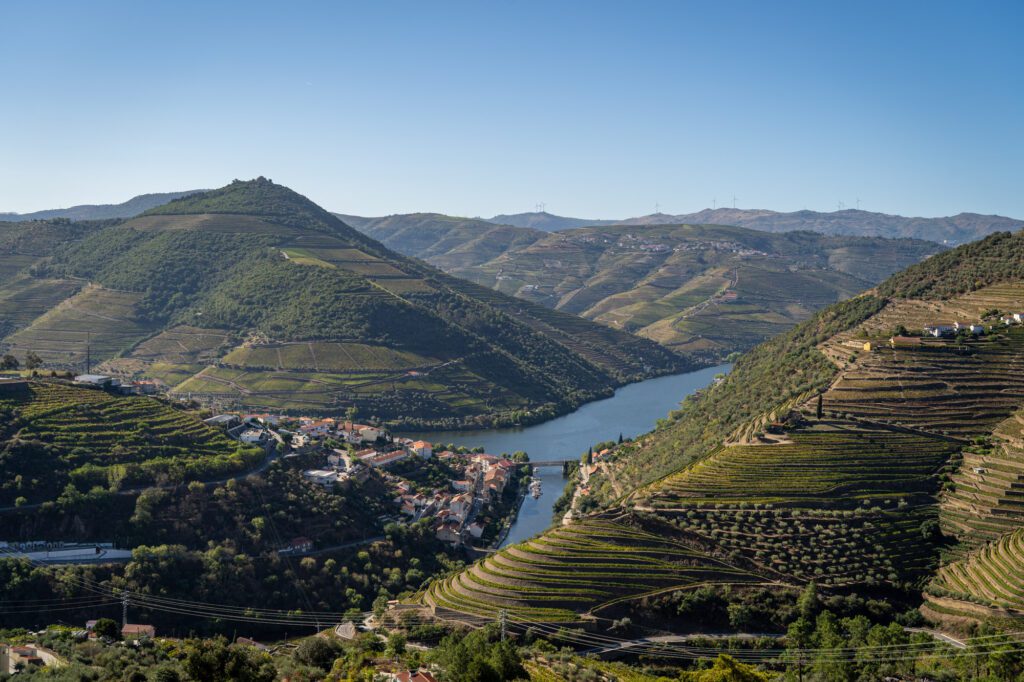
It’s not an exaggeration to say that our day trip out to the Douro Valley was the highlight of our three months we spent galavanting around Europe a few years ago.
Between the unique terraced vineyards lining the steep hillsides of the valley and the winding Douro River, it’s one of the most beautiful wine regions we’ve ever been to (and we live on the west coast of the United States, home to several excellent wine regions including the Willamette Valley, which is about an hour from our house).
We tell EVERYONE about it the second they say that they’re thinking about a trip to Portugal, because it is well worth setting aside a day for, even with a relatively limited time in Portugal.
Basically, you could do this as a self-guided day trip on your own, but that presents a couple of problems.
Either you have to rent a car (which is inconvenient and means you can’t enjoy the wine as fully), or you have to take the train (which means you’ll miss a bunch of the viewpoints and wineries that a car allows you to get to).
We considered it, but at the end of the day, we went with this full day tour, loved it, and have sent multiple friends and family members on the same exact tour since.
In fact, we have sent both Matt’s mom and two of Alysha’s best friends on this tour, and they both loved it.
Here are the highlights:
- It includes pickup in central Porto, so you don’t have to worry about getting out there on your own (it’s a 1.5-2 hour journey by car or train).
- It includes multiple wine tastings – a guided port tasting, tons of wine with lunch, and a port tonic on the boat ride.
- It includes a HUGE lunch, complete with different non-port wines to try, in a tiny town where one of the owner’s parents grew up. I do mean huge – we thought the first course was the entire thing, and ended up being so full by the end.
- You get to hop on a boat ride on the Douro River to see the terraced vineyards of the Douro Valley from a different perspective than most people.
At the end of the day, it’s definitely not the cheapest way to see the Douro Valley, but we came away thinking it was a good value, and absolutely loved the experience from start to finish.
And we haven’t even mentioned the friendly guides who you’ll spend the day with!
They’ll give you some insight and commentary on life in Porto, give you recommendations on where to eat and drink in the city, and you’ll get to meet other like-minded travelers who are on the tour with you.
Click here to check prices and availability for your trip to the Douro Valley
What to Do with More Time in Portugal
If you happen to have more time in Portugal, there are two additions
If you only have a day or two, we’d add that time to the stretch between Lisbon and Porto, spending a few nights in one of the many cities along the way.
There are plenty of great options, from beach towns to university towns to ancient abbeys.
On our first trip to Portugal, we stopped in Coimbra, a riverfront university town roughly halfway between Lisbon and Porto, and really enjoyed it.
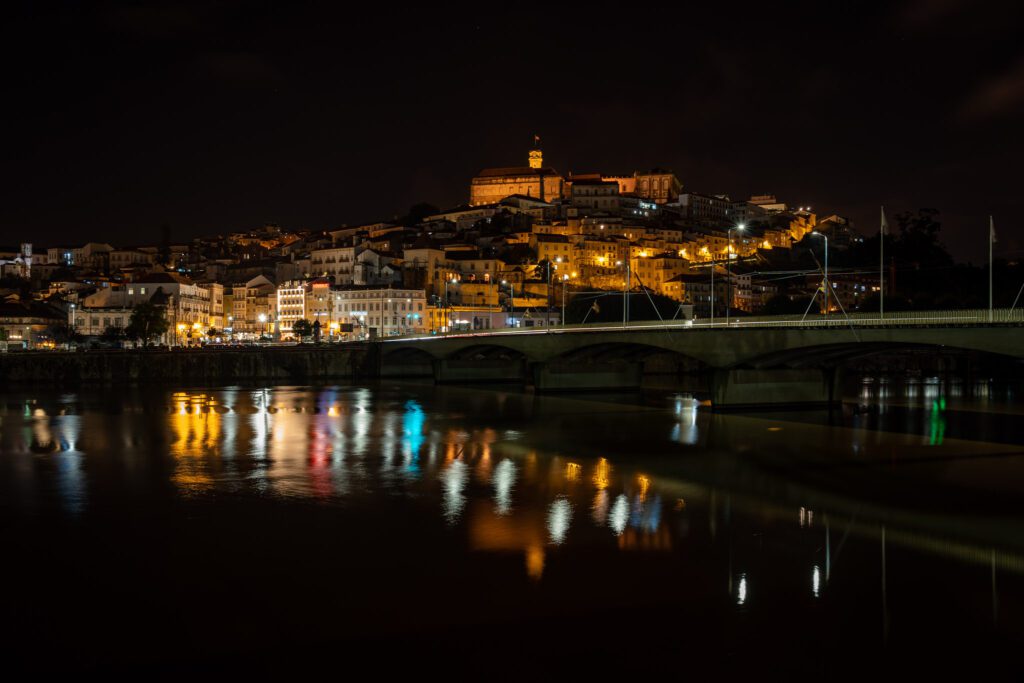
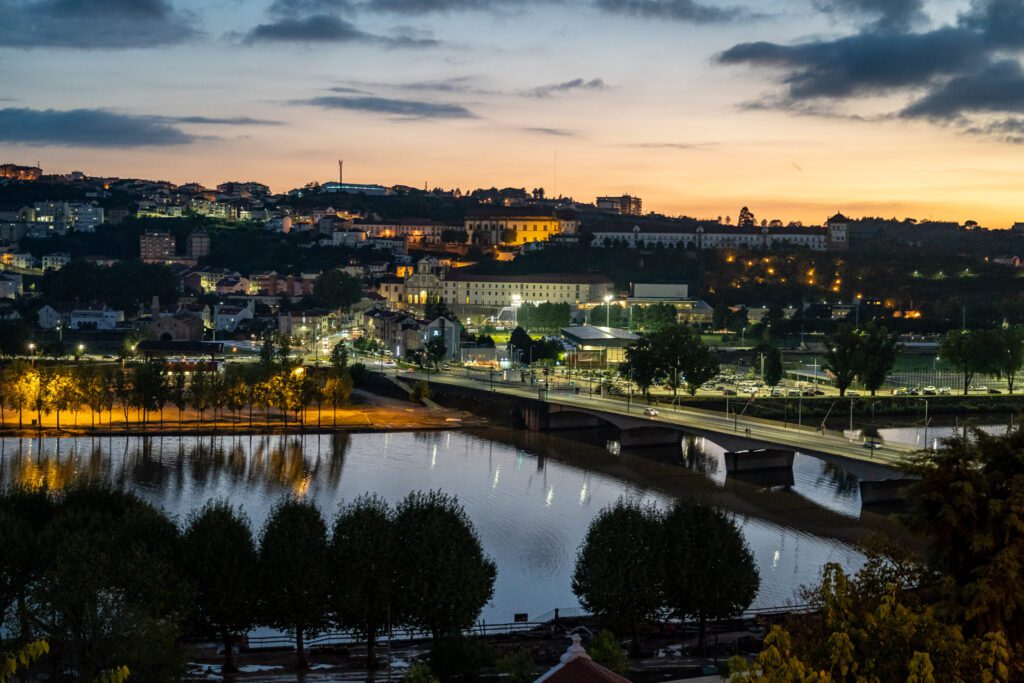
It’s like Hogwarts with all the students milling around the very old, medieval feeling city center.
Crucially, it’s also well connected on the high speed train lines between the two cities.
If you want to go elsewhere, you are probably going to want to rent a car because the regional train network connecting places like Óbidos, Nazaré, and Peniche are either slow or nonexistent.
In that scenario, we’d rent the car in Lisbon and drive between Lisbon and Porto, which will incur a one-way fee but will also be the most efficient way to do it.
Another good option for a convenient and fun addition would be Évora, where we spent a couple nights a few years ago on our way from the Algarve to Lisbon.
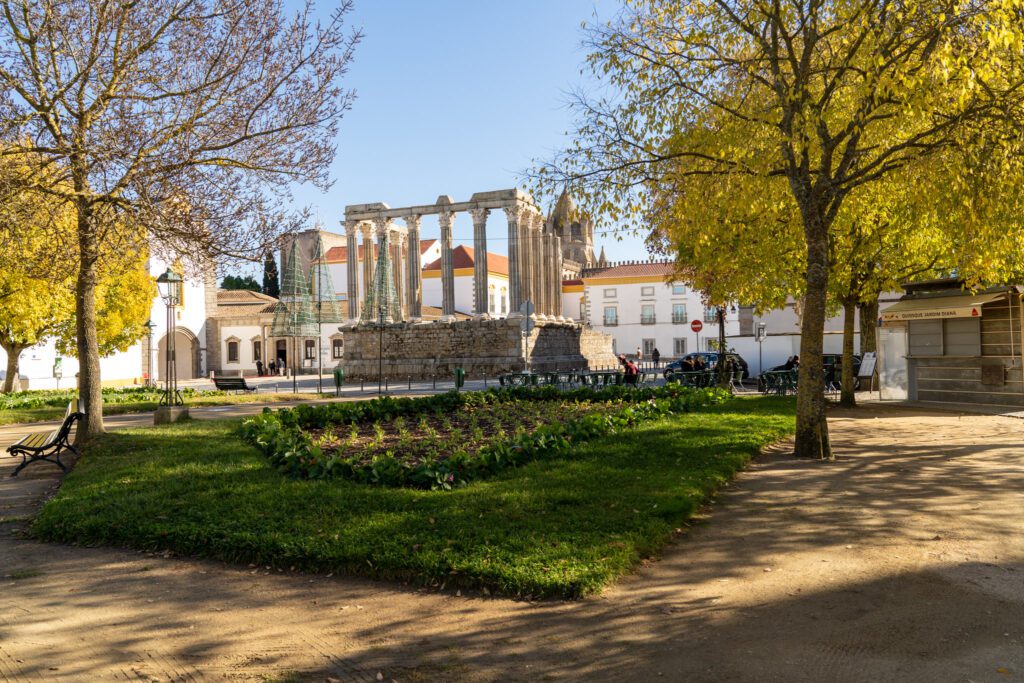
It’s on a high speed train line, and is an interesting city with a charming downtown area, some cool Roman ruins, and is the heart of our favorite wine region in Portugal.
If you have at least three extra days AND you’re a beach person, then we’d add the Algarve.
It’s a long way to go because you have to go all the way to the southern coast, so it doesn’t make sense to add if you have anything less than three days.
Lucky for you, we have an entire guide to planning that longer trip that includes Lisbon, Porto, and the Algarve – read our 10 day Portugal itinerary for that.
What to Do with Less Time in Portugal
If you have only six days, we’d follow the itinerary above as written with one change: cut a day in Lisbon so your time is split equally between the two cities.
Ideally, we’d prefer to have the extra day (especially if you’re going to be jetlagged), but three days should be enough time.
You’ll have to decide whether or not you want to spend the third day in Lisbon on a day trip, or exploring the city.
With anything less than six days, we’d strongly recommend staying in one place – probably Lisbon – and doing day trips from there instead of trying to do both Lisbon and Porto (you lose a half day on travel between the two).
Planning a trip to Portugal?
Here are our other Portugal travel guides to help you plan an incredible trip (even if you have to eat gluten free!).
If there’s no link below, it means we’re still working on it – long, in-depth guides take time! We’re working on it, though, we promise.
Portugal:
- Exactly How to Spend One Week in Portugal (for First Timers)
- 10 Days in Portugal: Planning the Perfect Portugal Itinerary
Lisbon
- 25 Incredible Things to Do in Lisbon: A Complete Guide
- 3 Days in Lisbon: Planning the Perfect Lisbon Itinerary
- One Day in Lisbon: The Best of Lisbon in 24 Hours
- Where to Stay in Lisbon: Our Guide to 4 Amazing Places to Stay
- Gluten Free Lisbon: A Complete Guide to Lisbon’s Best Gluten Free Restaurants
- The Best Coffee in Lisbon: 9 Amazing Lisbon Coffee Shops to Add to Your List
Porto:
- 3 Days in Porto: Planning the Perfect Porto Itinerary
- One Day in Porto: How to See the Best of Porto in a Day
- Where to Stay in Porto, Portugal: The 3 Best Places to Stay
The Algarve:
